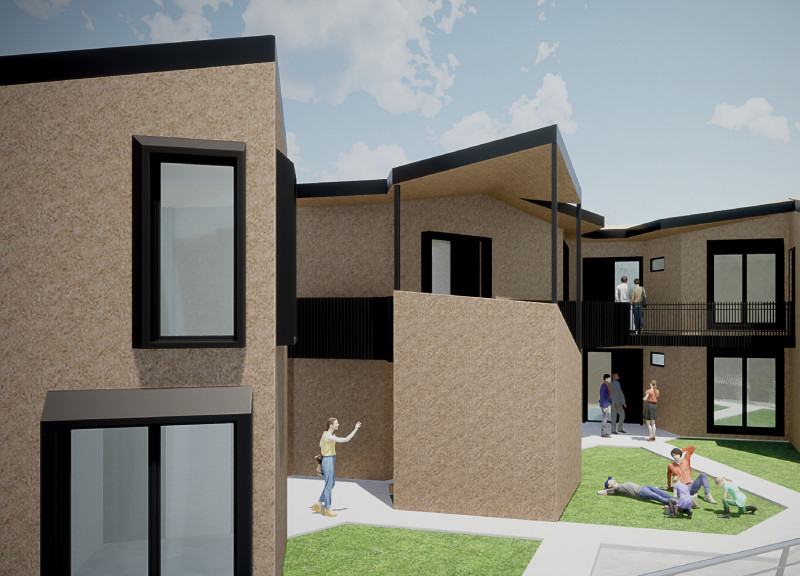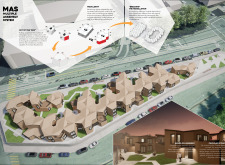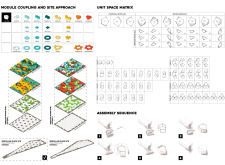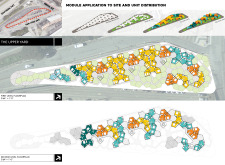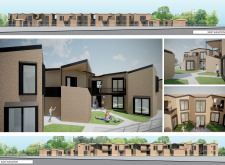5 key facts about this project
At the core of the "Multiple Assembly System," the architectural concept revolves around modularity. The project features a series of individual units constructed in pentagonal geometries, which deviates from conventional straight-line arrangements typically seen in urban housing. This unique form allows for efficient use of space, creating opportunities for varied residential configurations. Each unit can be customized, providing future residents with choices that reflect their personal lifestyles and preferences.
The project's function is multifaceted, serving not just as residential housing but also as a catalyst for community interaction. By introducing shared spaces interspersed throughout the design, residents are encouraged to engage with one another, fostering a sense of belonging and interconnectedness. These communal gardens and social areas are strategically placed to ensure that while individuals have their private spaces, there are ample opportunities for communal gatherings, informal meetings, and recreational activities.
One significant aspect of the design is its emphasis on sustainable materiality. The use of prefabricated timber panels, fiber cement boards, and specialized glazing systems aligns with modern architectural trends focused on environmental responsibility. These materials not only provide durability and aesthetic appeal but also facilitate a construction process that minimizes waste. The project integrates the principles of the circular economy, ensuring that materials can be repurposed or recycled effectively, thereby reducing the overall environmental footprint of the building process.
The assembly process of the housing units is also noteworthy. The project was designed with hands-on assembly in mind, allowing for direct resident participation. This involvement not only empowers residents but also instills a sense of ownership over their living environment. Such an approach can encourage community spirit and collective responsibility among the inhabitants, creating a stronger bond within the living community.
Throughout the design, attention to detail is prevalent. The clever use of spaces and the thoughtful arrangement of units promotes natural light and ventilation while maintaining privacy. Rooflines and overhangs are designed to enhance energy efficiency and provide shading without compromising the aesthetic qualities of the structure. The adaptability of the design allows it to respond dynamically to various site conditions, thereby reflecting an understanding of the urban landscape and its unique challenges.
Ultimately, the "Multiple Assembly System" stands as an example of a thoughtful architectural response to modern urban housing needs. Its distinct modular approach and commitment to sustainability position it as a forward-thinking model for future architectural designs. The project's emphasis on community engagement and ecological considerations makes it a relevant case study for architects and urban planners alike.
For those looking to explore the nuances of this innovative architectural project further, reviewing the architectural plans, architectural sections, and architectural designs will provide deeper insights into how these unique elements come together. This investigation can unveil the intricate thought processes behind the design and the functional aspirations that drive its development, showcasing the project's significance within contemporary architecture.


